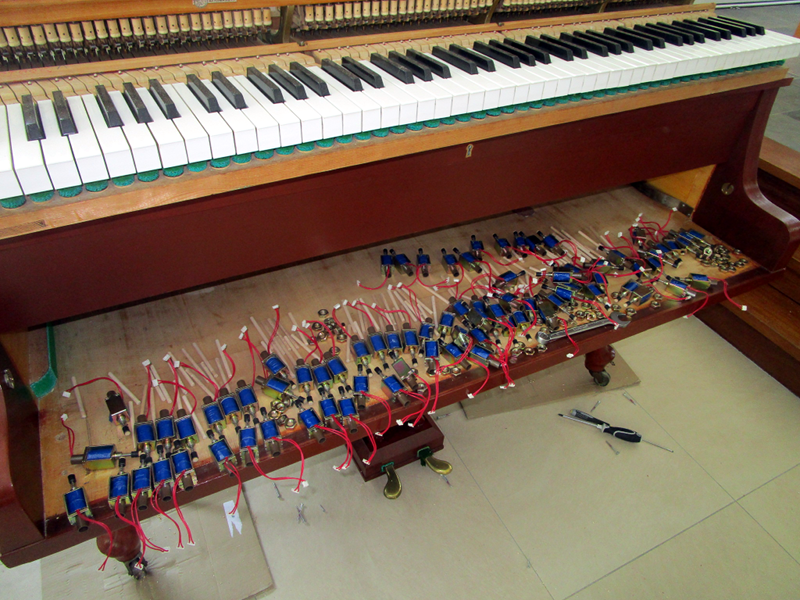Like a lot of people, [Jacques] doesn’t think a big hunk of plastic light enough to carry under your arm is a piano, even if it does have 88 keys. A piano is supposed to be a hefty piece of furniture that you have to buy people pizza to help you move. So he bought a used baby grand piano. It wasn’t in very good shape, though, so while restoring it, he also added MIDI to it. You can see the finished result in the video below.
At $100, the price was right, although it cost more to move it. Between water damage, moth attacks, and storage in a garage, the piano — an old Zimmerman — needed a lot of tender loving care. When it came to MIDI, [Jacques] found a used Disklavier — a very expensive piece of kit — but it didn’t fit the Zimmerman or another piano at hand. The solenoids and optical sensors are set up for a particular piano, so what can you do? Easy! Rebuild the bar that holds the solenoids and sensors.
Doing anything that you have to duplicate 88 times is sure to be a challenge. But it was even worse than that. The keys are tightly and irregularly spaced. The solenoids have to be very closely packed and any error means redoing the whole assembly. Luckily, the new bar design groups the solenoids so you can remove some of them without taking out all of them.
So far, only the output solenoids are working. Reading the keys is future work, but we think that might be easier than what he’s already accomplished. We’ve seen a lot of takes on pianos over the years. We’ve even seen the solenoid trick done on a smaller scale.















Just last week I seen a beautiful baby grand piano on Craigslist in the free section! You can’t even give them away anymore. I’ve already got a piano I don’t play because it’s so out of tune. It’s easier to just turn on one of my electronic keyboards. They are always in tune and have sequencers built in. I almost picked that baby grand up just to re purpose the nice wood but I can’t get myself to scrap a perfectly good piano.
You could buy a lot of beautiful kiln dried wood for what it would take to move the baby grand.
The larger pieces are veneer. Not easily ‘re-purposed’. You can learn to do very basic piano tuning on an instrument with little value. Takes a little patience . The tools and software are available and not expensive. Learning to properly voice an instrument would likely need a quantum leap in your knowledge of temperament and ear training. That’s not easy and you may never be satisfied hearing a disgusting fuzzy MP3 again.
I think that most electronic piano conversions use PWM and some sort of modeling to achieve force and velocity control. Simply slamming a solenoid on and off will just make sound, not music.
Translating velocity to pulse length isn’t really rocket science.
It’s more complex than you imagine. It’s not a simple linear translation and every solenoid will have its own response graph.
PS: Should read “every solenoid type”
I’d like to second the idea that you *yes, even you* can tune a piano. It takes patience, a piano tuning “hammer”, two mutes (at least), and if you’re going to spend any money at all, spend it on a decent tuner (in the ~$100 range, or at least something with chromatic and cent measurement (maybe with a dial))
Way too many pianos getting scrapped when they just need tuning… even by musicians!
If the piano has a difficult to repair problem like a broken soundboard, or worse a broken wrest block to get back a playable instruments means a tear down and rebuild, if the piano is a quality one like a Seinway, a Bechstein or a Petrof, it could be done, but on a small brand made cheaply is not economically feasible. On the other hand if the repairs are minor it could be an interesting pastime to retune it even at 432 Hz if the 440 tune can’t be achieved.
When Goodwill (or others) offer an old piano for $10, check to see how much mahogany you can recycle from it.
Brad: You’ve already scrapped a perfectly good piano. Maybe spend the money on a tuner.
Randy: Moving a piano is just a task. It’s not terribly expensive.
Or, just put an Arduino or Raspberry Pi in every object on Earth.